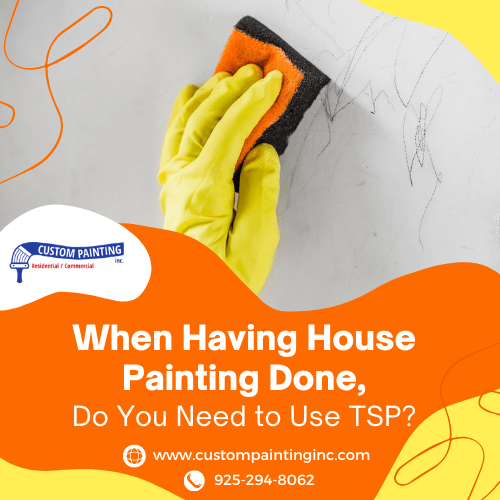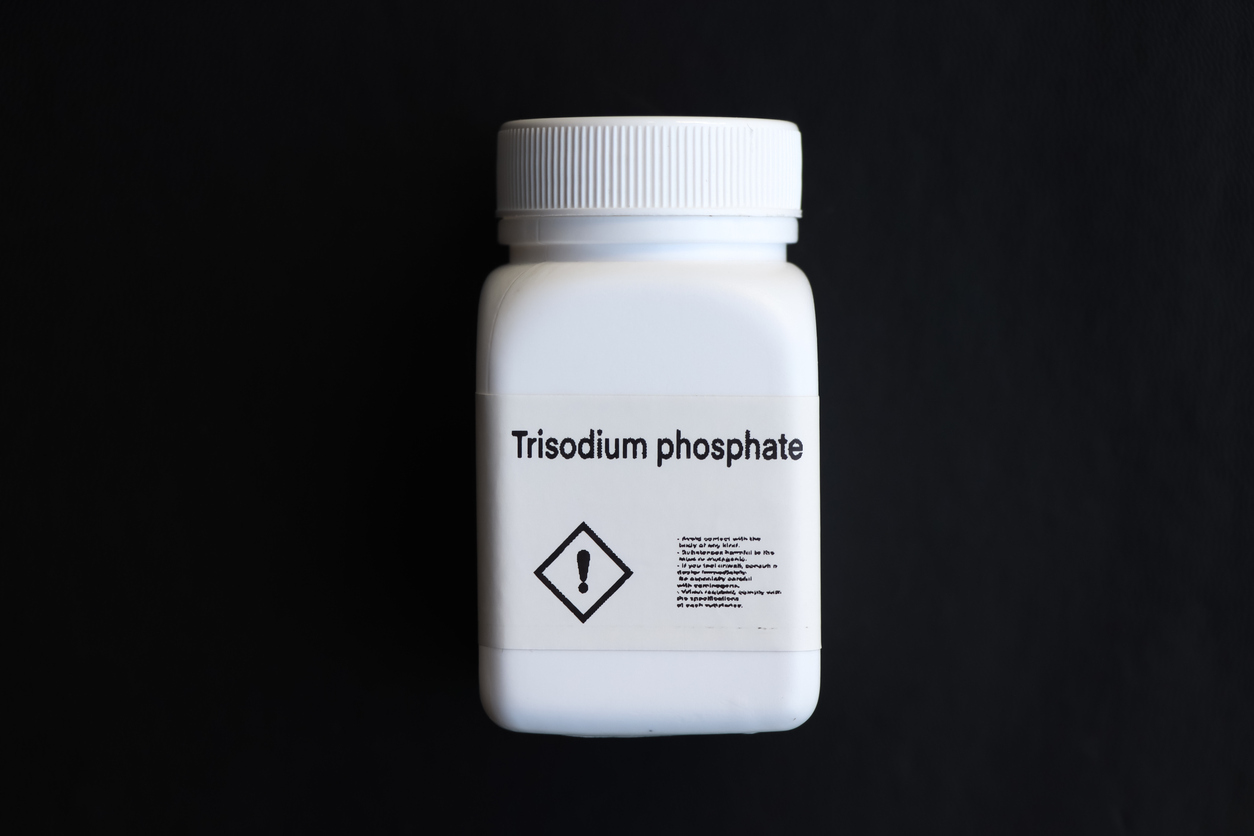Before you paint your room a new color, clean the surface first so the new paint adheres well to the wall. Depending on the condition of your walls, you’ll need to select the appropriate cleaning products and tools.
If the walls look good and have minimal dirt, just dusting it should be fine. But when dealing with super-dirty walls, you’ll need other cleaning solutions to get rid of the stubborn dirt. One of the common cleaning solutions in paint projects is trisodium phosphate, or TSP.
What is trisodium phosphate (TSP)?
Trisodium phosphate, or TSP, is a heavy-duty cleaning agent commonly used to clean and prepare surfaces for painting or refinishing. It is a highly effective cleaner that helps remove grease, grime, mildew, and other residues that can prevent proper paint adhesion. Here’s more to it:
Chemical composition
- Trisodium phosphate is a white, crystalline, water-soluble compound made of sodium and phosphate. Its chemical formula is Na₃PO₄.
Uses
1. Surface preparation:
- TSP is widely used to clean surfaces like walls, wood, and concrete before painting to ensure proper adhesion.
2. Degreasing:
- It effectively cuts through tough grease and oil stains, making it ideal for kitchens or garages.
3. Stain removal:
- TSP can remove nicotine stains, mildew, and crayon marks.
4. General cleaning:
- It’s also used as a general-purpose cleaner for exterior siding, decks, and masonry.
Advantages
Highly effective:
- It removes tough stains and prepares surfaces better than many alternatives.
Deglossing:
- It helps dull glossy surfaces to improve paint adherence.
Versatile:
- It can be used on various materials, including wood, masonry, and concrete.
Disadvantages
Harshness:
- It can be too strong and harsh for some surfaces, such as aluminum, glass, or specific metals.
Environmental concerns:
- The phosphate content can contribute to water pollution, leading to algal blooms in water bodies.
Skin and eye irritation:
- Direct contact with TSP can irritate, so protective gear is necessary.
Rinsing requirement:
- Residues must be thoroughly rinsed off, as they can interfere with paint adhesion.
Is TSP safe?
Yes, TSP (trisodium phosphate) is generally safe and effective for cleaning surfaces before painting, as long as you use it correctly and take proper precautions. Here’s what you need to know:
Benefits of using TSP
- Powerful cleaning agent: TSP removes grease, grime, mildew, and old paint residues, ensuring a clean surface for better paint adhesion.
- Surface preparation: It helps de-gloss surfaces, making them more receptive to new paint or primer.
- Versatile: It is suitable for a variety of surfaces, including walls, wood, and concrete.
Safety tips
- Protect yourself: Wear gloves, safety goggles, and a mask to avoid skin and eye irritation or inhaling dust.
- Dilute properly: Follow the manufacturer’s instructions to mix the correct ratio of TSP to water.
- Test on small areas: Test a small, inconspicuous area to ensure it doesn’t damage the surface.
- Ventilation: Use TSP in well-ventilated areas, especially indoors.
- Avoid certain surfaces: TSP can damage aluminum, glass, and some metal finishes. Be cautious and rinse it thoroughly if using it on these materials.
Steps for using TSP
- Prepare the solution: Mix TSP with warm water as directed on the packaging.
- Apply: Use a sponge, rag, or brush to apply the solution to the surface.
- Scrub lightly: Gently scrub to remove dirt and grease.
- Rinse thoroughly: Rinse with clean water to remove all TSP residue, as leftover residue can affect paint adhesion.
- Dry completely: Ensure the surface is completely dry before painting.
What to do if skin irritation occurs
1. Rinse with water:
- Flush the affected area with plenty of water for at least 15 minutes.
2. Apply a soothing cream:
- Use an over-the-counter hydrocortisone cream or aloe vera to soothe irritation.
3. Seek medical advice:
- Contact a healthcare professional if the skin becomes red, swollen, or blistered.
Do you need TSP in every paint project?
No, you don’t need to use TSP every time you clean walls before painting. The need for TSP depends on the condition of the walls and the type of dirt or residue present. Here’s a breakdown of when TSP is necessary and when it can be skipped:
When to Use TSP
Grease and grime:
- TSP is excellent in kitchens or areas with significant grease build-up for cutting through grease and ensuring a clean surface.
Stains:
- It effectively removes stubborn stains like nicotine, crayon marks, or mildew.
Highly glossy surfaces:
- TSP helps to de-gloss surfaces, improving paint adhesion on high-sheen finishes.
Poorly Maintained Walls:
- If walls are excessively dirty or neglected, TSP can clean them thoroughly.
When you don’t need TSP
Light cleaning:
- If the walls are relatively clean and grease-free, you don’t need TSP. A mild detergent or soap with warm water is often sufficient.
Freshly painted surfaces:
- Walls that are in good condition and were painted recently may only need a dusting or wipe-down with plain water or a non-abrasive cleaner.
Minimal dirt:
- TSP may be overkill for walls in bedrooms or living rooms with minor dust or fingerprints. A mild cleaner will do the job.
Alternatives to TSP
TSP is a powerful tool for cleaning and prepping surfaces. However, due to its harshness, you should use it carefully and selectively based on your project’s needs.
If TSP feels too harsh for your needs or if you have environmental concerns regarding its use, consider using a phosphate-free TSP substitute or a milder cleaning agent. These are less likely to irritate the skin and impact the environment but can still be effective for cleaning.
By taking proper precautions, you can minimize the risks of skin irritation while using TSP.
Parting words
TSP is an effective cleaning solution in many paint projects. It is essential if you’re dealing with grease or stubborn dirt on your walls. Otherwise, it is not required every time you clean the walls before painting them. When using TSP, take the necessary precautions to ensure you use it safely.
If you want professional results, Custom Painting, Inc. is here to help with all your painting needs, ensuring a flawless finish every time. Call us at 925-686-0903 or fill out our online form to schedule an appointment. Let Custom Painting, Inc. bring your vision to life with expertise and care.



